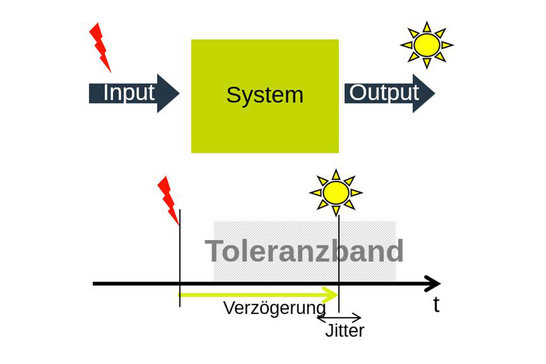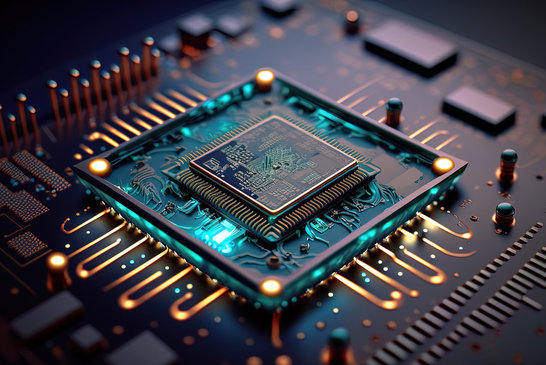![[Translate to Englisch:] [Translate to Englisch:]](/fileadmin/_processed_/0/4/csm_futuristisch_e31e37c482.jpg)
The term real-time describes a system behavior in which certain tasks are guaranteed to be executed within a defined period of time. It is not primarily about speed, but about predictability and reliability: a real-time system must always react to an event in good time - even if it only lasts a few milliseconds.
The quality of a real-time system is determined by two parameters:
- The delay from the occurrence of the input event to the reaction at the output.
- The repetition accuracy or temporal precision of the delay time, also known as jitter.

Microcontrollers: slim, precise and reliable
Microcontrollers are particularly suitable for real-time applications. They generally work deterministically, meaning that their behavior can be precisely predetermined. The hardware and software architectures of microcontrollers are lean and without the large intermediate layers that are common in more complex computer systems. Thanks to their direct access to hardware and their compact architecture, they can perform time-critical control and regulation tasks precisely and reliably.
Use without operating system
Another advantage: microcontrollers can be operated bare-metal, i.e. without an operating system. This allows the developer to control the entire process down to the last detail and adapt it precisely to real-time requirements.
Alternatively, microcontrollers can be operated with a lean real-time operating system (RTOS). An RTOS offers additional functions such as task management, time slice planning or priority control, as well as many useful libraries such as network connections, without losing real-time capability.

Cost-effective alternative
Microcontrollers are generally cheaper than powerful application processors on which a powerful operating system such as Embedded Linux is used. Production costs are lower as fewer complex components and leaner software are required. For customized real-time applications, a microcontroller with or without RTOS therefore offers a cost-effective solution.
Numerous application possibilities
Whether in medical technology, special vehicles or industrial control systems: Wherever time-critical processes need to be reliably controlled, microcontrollers demonstrate their real-time strengths.
Ginzinger electronic systems uses microcontrollers in many applications with real-time requirements and combines them with powerful application processors and embedded Linux in the overlaid, less time-critical applications.

